The UK has just experienced one of its wettest and mildest winter on record. An abundance of f resh water and above average temperatures means an ideal environment for mosquitoes. But it’s not just the rural areas that suffer. Mosquitoes are encroaching ever closer and make their home in sub-urban and urban spaces.
resh water and above average temperatures means an ideal environment for mosquitoes. But it’s not just the rural areas that suffer. Mosquitoes are encroaching ever closer and make their home in sub-urban and urban spaces.
Following a number of glorious summer days interest in mosquitoes is once again peaking if some recent articles (Express; BBC, The Guardian) are anything to go by. While I certainly believe that some apprehensions are justified I also believe that scaremongering does not help. Let me share with you what I’ve recently talked about at one of our in-house awareness-raising sessions.
Know your Mosquitoes – why?
Because mosquitoes are insect vectors responsible for the transmission of parasitic and viral infections, some of them potentially serious. There are 33 species of mosquitoes in the United Kingdom. Most of them are rather small and – so far – qualify as a mild to moderate nuisance. But things are changing.
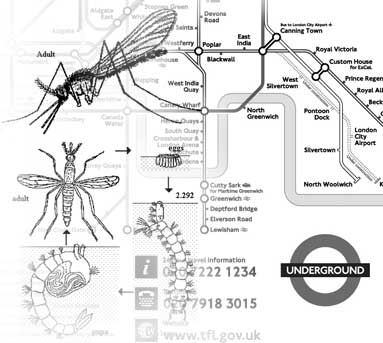 The common house mosquito Culex pipiens (small, beige/brown 3-7 mm body length) is a biter and well-established. The aptly named subspecies Culex pipiens molestus has adapted to life in the underground – the London Underground and other underground railways. It is known as a vector for meningitis and urticaria and has recently been identified as a potential vector of West Nile Virus (WNV).
The common house mosquito Culex pipiens (small, beige/brown 3-7 mm body length) is a biter and well-established. The aptly named subspecies Culex pipiens molestus has adapted to life in the underground – the London Underground and other underground railways. It is known as a vector for meningitis and urticaria and has recently been identified as a potential vector of West Nile Virus (WNV).
Anopheles plumbeus (small, slate grey body, potential WNM and malaria vector) is a tree-hole mosquito but is changing its habitats to now also breed in man-made water containers. It is a persistent biter with peak activity at dusk, entering houses with a preference for mammals including humans but will also bite birds.
One notable exception to the native small mosquitoes is the comparatively large ‘Banded’ Mosquito Culiseta annulata that has a nasty bite but is otherwise considered harmless so far. Problem is, it can easily be confused with the more worrisome Asian Tiger Mosquito Aedes albopictus so here is a quick comparison:
Man versus Mosquito – War?
Some see the brewing crisis as a war between mosquito carrying diseases and man, a war that supposedly can be won by ever more powerful poisons or clever biological engineering. I’m thinking: “would be nice if it were that ‘simple quick’ fixes can be found but people’s behaviour also are inextricably enmeshed in this. Mosquitoes and people, we all share this planet and go about living and surviving. It’s actually more complicated.” I think my views tie in with those of Bill Gates whose work with malaria prevention I admire. He recently tweeted:

Do read his inspiring blog ‘gatesnotes’ but here is a quick summary of why human behaviour matters:
- mosquitoes transmit disease only for a few days before they die – infected people carry disease (often undiagnosed) much longer, often for many years
- mosquitoes travel only short distances – people, human activity spans the globe
Mosquitoes and human behaviour are tightly linked
Earlier I mentioned the Asian Tiger Mosquito and here is why I think there is reason to worry (but not panic!): in the mid 1980s, the Asian Tiger spread from Asia via the tyre trade to the US and within 20 years is now firmly entrenched across many states. All efforts at control have failed.


It was introduced and took hold in Italy and Southern France, spread into parts of Switzerland and found it’s northernmost habitat in the greenhouses of Holland (red areas on the map above). Seen in this light you will agree that the Asian Tiger is rightly listed as one of the 100 top invasive species and has to be taken seriously. It was responsible for
- Chikungunya Fever epidemic, French Island La Reunion in 2005/6, with an estimated 266,000 people infected and 248 fatalities
- the first and only outbreak of Chikungunya fever on the European continent, 2007 in Ravenna, Italy, over 200 people infected
No reason for Panic – but a real need for Vigilance!
People live longer and travel – much more so than mosquitoes. So, if you’ve just come back from an amazing holiday and don’t feel so well get it checked out quickly and thoroughly. Transmission of disease all starts somewhere and you don’t really want to become known as patient 0.
- Mosquitoes need warmth and moisture – don’t give it to them!
Avoid having open sources of stagnant water anywhere around your house, terrace, patio or garden. Inspect often. While the Asian Tiger has not yet been officially reported in the UK, it is perhaps just a matter of time especially with our ever warmer and wetter climate.
- Keep an eye out. Know your mosquitoes.
Catch them and report them to Mosquito Watch by the UK’s Health Protection Agency and the Chartered Institute of Environmental Health.
What else can you do? Stay covered, especially around dusk. Use insect repellents. Sleep under a mosquito net – still one of the best and simplest options. For ideas, check out our popular Travel Supplies Section.
-
Don’t be scared – understand and be better prepared!
Have a great week ~ Monika
Tweet
thank you for sharing and helping raise awareness.
Resources / References:
- HPA Mosquitoes Species Profiles;
- PLOS Online Abstract: British Container Breeding Mosquitoes by Susannah Townroe and Amanda Callaghan, 2014
- 2010, Sarah E. Randolph and David J. Rogers; “The arrival, establishment and spread of exotic diseases: patterns and predictions
- 2013, Jolyon M. Medlock et al., “Review of the Invasive Mosquitoes in Europe: Ecology, Public Health Risks, and Control Options”
update:
Latest map on the presence of #AedesAegypti in #Europe, a mosquito which can transmit #Zika https://t.co/UWn1JPdg1d pic.twitter.com/6aNKvWxW1d
— ECDC Outbreaks (@ECDC_Outbreaks) August 8, 2016
For more EVAQ8 blog simply use the right hand navigation. For emergency kits and practical resources use the top navigation. For FREE resources head over to our Preparedness Hub and find out why we use humour. If you like this post, please share it to help raise awareness for Emergency and Disaster Preparedness. Thank you!


 It all got me thinking about the crucial and complex link of altruism and resilience and how this connects up to disaster preparedness – say, when – perhaps because of a major incident – we all may have to grapple with the consequences of transport and supply disruptions on a very different scale for real.
It all got me thinking about the crucial and complex link of altruism and resilience and how this connects up to disaster preparedness – say, when – perhaps because of a major incident – we all may have to grapple with the consequences of transport and supply disruptions on a very different scale for real. MIT researchers Schwartz and colleagues who made these findings also think that the links between social interest, better mental resilience and reduced stress are in turn related to augmented self-confidence, an increased ability to be able to reframe one’s own experience and perceive greater meaning in life. Yet more evidence comes from the influential Hawaiian longitudinal study I mentioned in my earlier
MIT researchers Schwartz and colleagues who made these findings also think that the links between social interest, better mental resilience and reduced stress are in turn related to augmented self-confidence, an increased ability to be able to reframe one’s own experience and perceive greater meaning in life. Yet more evidence comes from the influential Hawaiian longitudinal study I mentioned in my earlier 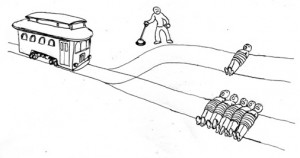
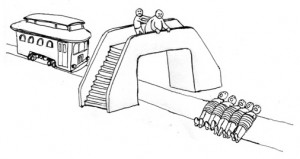
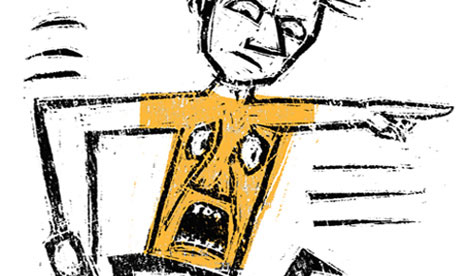

 Feeling fear is inevitable.
Feeling fear is inevitable.
 Go play, have fun – in the real world out there and away from virtual reality screens at least 90% of the time. Try completely new activities – and get good at them. Any new skill or trick you add to your toolbox will come in handy at some time in some way.
Go play, have fun – in the real world out there and away from virtual reality screens at least 90% of the time. Try completely new activities – and get good at them. Any new skill or trick you add to your toolbox will come in handy at some time in some way.
 Finding the right kind of optimism is the real challenge here. Optimism is not just one thing. It is complex and means different things to different people. Optimism is interesting because it comes in different flavours and shades. Contrary to popular belief, ‘resilient’ optimists do not view the world simply through rose-tinted-glasses. Resilient optimists acquire a certain kind or flavour of ‘realistic optimism’ that is just right – the ‘magic’ Goldilocks principle: just right.
Finding the right kind of optimism is the real challenge here. Optimism is not just one thing. It is complex and means different things to different people. Optimism is interesting because it comes in different flavours and shades. Contrary to popular belief, ‘resilient’ optimists do not view the world simply through rose-tinted-glasses. Resilient optimists acquire a certain kind or flavour of ‘realistic optimism’ that is just right – the ‘magic’ Goldilocks principle: just right. Wishing you an imaginative and inspiring weekend, and apologies if the above feels a bit like a roller-coast ride; as a mental agility exercise it was meant to be and hopefully also entertaining, thought- and action provoking. Monika
Wishing you an imaginative and inspiring weekend, and apologies if the above feels a bit like a roller-coast ride; as a mental agility exercise it was meant to be and hopefully also entertaining, thought- and action provoking. Monika 
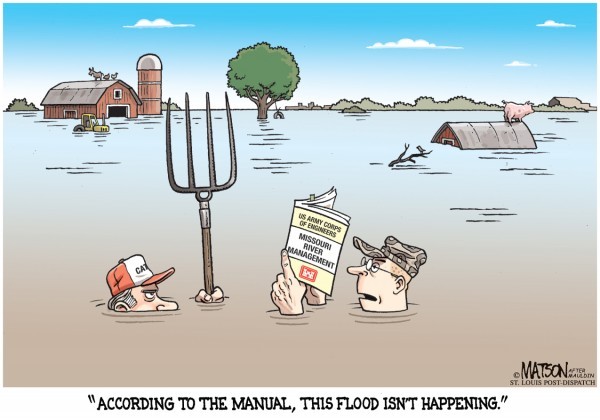



 As a somewhat removed Swiss observer yet from ‘within so to speak as someone who lives here I am continually amazed at the British: the speed and boundless generosity with which communities have come together, pooling resources and sheer man (and woman and child!) power to help each another as well as to offer help across wider areas. In fact, generosity is and was so overwhelming that this morning the local newspaper
As a somewhat removed Swiss observer yet from ‘within so to speak as someone who lives here I am continually amazed at the British: the speed and boundless generosity with which communities have come together, pooling resources and sheer man (and woman and child!) power to help each another as well as to offer help across wider areas. In fact, generosity is and was so overwhelming that this morning the local newspaper 





